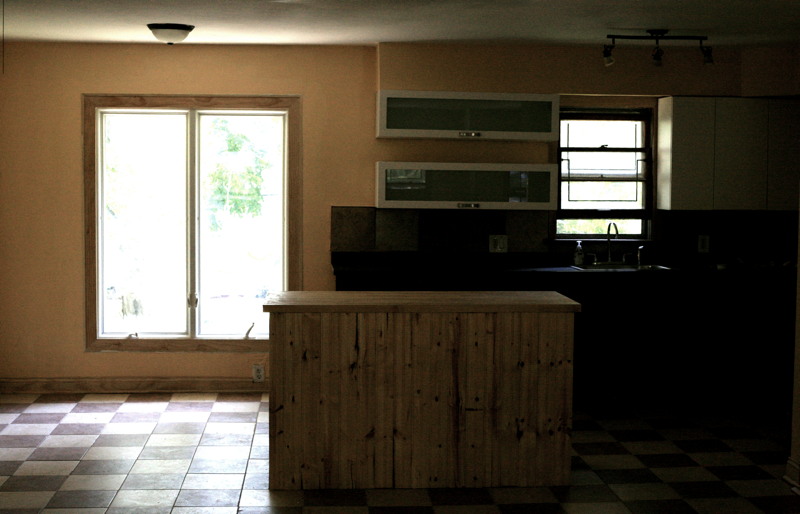Social Media Meets Investment: A Primer on Fundrise
Many loyal followers of our Twitter account or Facebook page have probably read about Fundrise, or have individually been invited to join our network. I figured I’d give a bit of background to help along the process and explain what it is, what it’s not, and why it’s important.
(Editorial note: This post will use a few scary words like “investment” or “real estate” in this post. TLDR: Last paragraph.)

Fundrise is an innovative platform for real estate investment developed by a team of Washington, D.C. based veteran real estate investors who, tired of being forced to work with investors whose goals were at odds with their own and who had little actual social investment in the communities they wanted to work in, decided they were going to figure out a way to do it better. The goal is, in their words, to “democratize” the process of real estate investment. Fundrise managed to get approval from the SEC to allow real estate developers (such as Handbuilt) to create individual investment offerings that effectively crowdfund development projects. To respond to a question I (and, I imagine, they) often get asked, this is not the same as the JOBS Act crowdfunding provisions, since you’re not investing in a startup company as an unaccredited entrepreneur; rather, it’s governed under SEC Regulation A. I am quite thankful that we didn’t have to go through this process for The Brick Trust (though we did think about it quite seriously with our private equity partners for awhile), as filing SEC paperwork has a time horizon just shorter than getting a building permit in the city of Chicago.
Citing the need to reduce the number of middle men that separate investors from actual buildings, Fundrise aims to fix what they call a “broken system” dominated by opacity of investment, unequal access (to unaccredited and small investors), and high costs that translate to lower returns for investors. Real Estate Investment Trusts, publicly traded real estate funds, are notoriously opaque and suffered catastrophic losses in the 2008 collapse. One of my former partners in the real estate world told me once that the success to business is being a good middle man, and this notion has its merits. Making connections that help two parties come to an agreement about some mutually beneficial, productive transaction. But Fundrise is governed by an aspiration to be better than a productive transaction; rather, it is governed by skipping the steps in this traditionally Byzantine process of investment to save money for investors and to build social capital alongside financial capital.
Key to this process is building relationships with unaccredited investors. Regulation A requires the relationship between investor and investee, if you will, to be “preexisting and substantive,” meaning, not some random guy you met on the street, but rather a colleague, friend, relative, or professional referral. It’s not really surprising but rather how human beings have been doing business since the beginning of time before automobiles, Thomas Friedman, and the global supply chain of cheap fossil fuel convinced Westerners that it was, in fact, more beneficial to buy products and services from people you had never met, people you would never meet, in places you would never visit. Elementary enough, right? Bring business back to the level of the human relationship. This is what social media is ostensibly all about, since Facebook and Twitter allow us to interact directly with other human beings, sharing information, cat pictures, or investment notions.

Structurally, the most important step in this process to achieve this goal is eliminating not one but many middle men. Most forms of business in the global market have become so large that very little can get done without ridiculous degrees of specialization and compartmentalization. Each of these processes and degrees cost money that, for investments, chip away at the bottom line for you, the investor.
“But wait,” you might say, “what about a mutual fund? I’m only paying a management fee of 0.5-1%! That’s just pennies, right?” That might not seem like a lot, especially on a per-dollar basis on your own end, but with an average stock market return in the vicinity of 4-8% for the average year, you’re talking about a management fee that could top twenty-five percent of profits, even if you’re still pulling a return from it. If you dilute the returns of each share of stock over its already inflated value (remember that stocks trade at a premium of their intrinsic value because growth is the only constant in the stock market mindset) and spread that return over billions of dollars or hundreds of thousands of investors, you’re talking about a huge amount of money that gets sucked into the pockets of a few wealthy investment managers.
Founder of FinancialMentor.com, Todd R. Tresidder, said in 2010 “All the evidence supports the disappointing fact that regular investors as a whole underperform the market. As long as they try to ‘beat the market’ they actually underperform.” The best way for regular investors to achieve better risk-adjusted returns is by focusing not on out performance, says Tresidder, but instead by losing less. (emphasis added)
(From Investopedia– is this really how we should think about money?)
Exactly how good those investment managers are at their jobs is dubious. Statistically, it is extremely difficult for individual or even professional investors to beat the market, meaning that more investors than not routinely fail to make decisions to buy and sell stocks that outperform an essentially randomized index of companies. When I mucked about in the stock market, I was notoriously organized about how I’d think about these comparisons between my picks and the random indices, and I found that, in binary terms (“beating the market” versus not) I could usually pull out a win about 55-60% of the time. I made some money, but I realized that the amount of time and hassle it took to spend on the financial analysis of hundreds of quarterly balance sheets, S&P reports, and even following news articles wasn’t really worth the benefit of a few extra bucks, especially when that investment had very little in the way of implications for my local community. Even if you invest yourself, you’re still paying brokerage fees, which, at $10, $20, or more per stock trade, means the brokerage is pulling in a nearly infinite marginal return on each trade executed (i.e., every additional stock trade costs them pennies out of that $10 or $20).
So, back to thinking local. Real estate can easily be thought of as a form of intrinsically local investing because you can, theoretically, put your money into the community around you. Sure, it doesn’t have to be local, but it should be. And why? The strongest communities, by and large, boast higher rates of density, stronger economic competition, and the vast amount of information and money that gets shared through density and competition.
There is no social capital involved in the production of an iPod. On the other hand, I own a house in Gary that I myself renovated with my own two hands and that I myself have lived in– whose renovation I financed and solicited financing for myself- and that is now happily rented out to three tenants. Thinking about the complete lifecycle of an investment and the management thereof, you can’t really get much more lean than that, nor can you get much more personal.
Fundrise, in effect, provides the potential to allow us to bring back into focus our mission of working with individual residents, tenants, buildings, and neighborhoods to build better housing, trimming the excess of managerial bureaucracy and costly capital. The process bridges a crucial gap between the shadowy realm of finance and the real, human scale of what a city is– people doing business together, eating together, writing blog posts together.
Understanding the difference between joining a network and investing
The biggest misconception I’ve run into when soliciting folks to join Fundrise is that investment is required. Investment is not required, and a survey of our network indicates that many of our members do not intend to invest any money– joining a network will only mean that you are kept apprised of the status of offerings as they appear. This highlights the problem plaguing our society of unfamiliarity with what, indeed, investment even is. Especially since 2008, the understanding of what investment is and what it is not has lagged hugely among a population that, quite understandably, no longer trusts many tenets of the economic system that it grew up with. I’ve encountered more than one junk bin book from the early 1990’s proclaiming how the Dow Jones was going to top 25,000 within fifteen years– sort of like how houses in Gary that were selling for $55,000 at the top of the market in 2006-08 can now be bought for $500 or $1,000. Many folks completely lost their shirts in 2008 because speculation was rampant– principally in real estate, even in cities like Gary or St. Louis- and there was very little interest in the value that social investment might have for understanding how to make better decisions about allocating capital. One ironic silver lining in the cloud of economic gloom sitting over cities like St. Louis or Gary is that many of these hard-hit Rust Belt cities that got dually hit by the decline of industry over the decades into the 2000’s and finally the housing market bubble in 2008 are now able to boast unprecedented opportunities for investment. My oft-cited statistic about Lake County, Indiana is that the April 2013 tax sale, wherein the county tries to sell some of the 14,000 or so tax-delinquent properties to everyone ranging from private equity jet-setters to toothless old men, was the largest on record following staggering bank and tax foreclosure rates that continued into 2011. The modern economy should have taught us that inexpensiveness is an economic advantage, especially in thinking about how to innovate, something discussed frequently and mentioned in a recent Al-Jazeera article by a St. Louisan. We’re very grounded in how we think about tackling this issue, so investment is not a casual pot of money that we throw into whatever we happen to be feeling that day, it’s a professional process based on a combination of creative vision and careful, analytical management.
For us on Fundrise, we’re hoping to raise investment capital to improve property we already own in neighborhoods we already are familiar with. No wildly speculative ventures, no pipe dreams, just a hope of providing affordable, comfortable, and, overall, better housing for inner city populations– while also providing a healthy bottom line for investors, emphasizing the savings of lean management and the benefits of a platform that works for you as an investor and for our cities.

Indeed, we haven’t even put together an offering on Fundrise yet because we’re looking to build affinity through the social network of it before taking that next step. The point is not to assume that most of our members intend to invest a specific or even any amount of money, but that they will see how the process works and that more experienced investors with great sums of liquidity will help demonstrate the profitability of the projects and the viability of the model. The platform is as much about demonstrability and education as it is about actual sums of capital.
Why Handbuilt
Building our network is a crucial first step. We believe in precedent. Certainly in terms of setting our own precedent as a successful business but also in precedents that establish and refine new ways of doing things. Community development for us is as much about buildings and neighborhoods as it is about the people who live, shop, work, and play in them, and so it should go without saying that we’re more interested in someone who can invest energy, moral support, or small amounts of money rather than someone who has zero social interest in the project and just wants a hefty return.
As far as our investment horizons, we’ve struggled with a few setbacks in our recent history, mostly our extremely difficult decision to cut ties for the most part with our original Indiana partners owing to reasons similar to why the Millers, et al., founded Fundrise– the goals of big money private equity investment in the inner city are simply not aligned with our interests in building a social movement alongside a modest-sized revolution in how we think about community investment. While I see some value and virtue in how the big private equity money can be used, I have, to grossly understate things, some doubts that the goals of (white, suburban) hedge fund traders are concurrent with those of (black, inner city) low-income tenants. These are all learning experiences, and striving for financial innovation must complement social sustainability. Still, we maintain a pretty respectable debt service ratio which will do nothing but improve in the near future, and that feels great to say.
We remain at this point the only Fundrise network that is both based in the Midwest and focused exclusively on low-income housing development, and we are likely the only one working exclusively in distressed inner city properties at a neighborhood level. As one of the smaller-capitalized companies on the platform, we believe that we stand to demonstrate the viability of the model in a major way in these Rust Belt cities that, indisputably, need some major love– and, of course, some major capital. We think we can find the love, and the capital will come later.
That being said, if you think it sounds like a cool platform, you should help us out by joining. You can log in with Facebook or LinkedIn, the signup process takes but a few minutes, and, remember– we’re not asking for money, just for your support.


